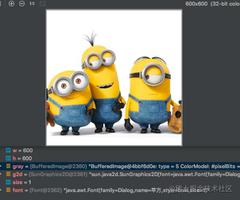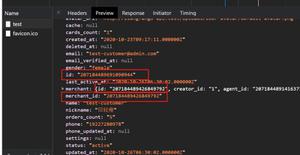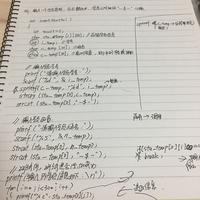在Swift中将十六进制字符串转换为NSData
我得到了在Objective-C中将String转换为HEX-String的代码。
- (NSString *) CreateDataWithHexString:(NSString*)inputString{
NSUInteger inLength = [inputString length];
unichar *inCharacters = alloca(sizeof(unichar) * inLength);
[inputString getCharacters:inCharacters range:NSMakeRange(0, inLength)];
UInt8 *outBytes = malloc(sizeof(UInt8) * ((inLength / 2) + 1));
NSInteger i, o = 0;
UInt8 outByte = 0;
for (i = 0; i < inLength; i++) {
UInt8 c = inCharacters[i];
SInt8 value = -1;
if (c >= '0' && c <= '9') value = (c - '0');
else if (c >= 'A' && c <= 'F') value = 10 + (c - 'A');
else if (c >= 'a' && c <= 'f') value = 10 + (c - 'a');
if (value >= 0) {
if (i % 2 == 1) {
outBytes[o++] = (outByte << 4) | value;
outByte = 0;
} else {
outByte = value;
}
} else {
if (o != 0) break;
}
}
NSData *a = [[NSData alloc] initWithBytesNoCopy:outBytes length:o freeWhenDone:YES];
NSString* newStr = [NSString stringWithUTF8String:[a bytes]];
return newStr;
}
我想要在Swift中也一样。任何人都可以在Swift中翻译此代码,或者在Swift中有任何简单的方法吗?
回答:
这是我的Data例行十六进制字符串:
extension String { /// Create `Data` from hexadecimal string representation
///
/// This creates a `Data` object from hex string. Note, if the string has any spaces or non-hex characters (e.g. starts with '<' and with a '>'), those are ignored and only hex characters are processed.
///
/// - returns: Data represented by this hexadecimal string.
var hexadecimal: Data? {
var data = Data(capacity: characters.count / 2)
let regex = try! NSRegularExpression(pattern: "[0-9a-f]{1,2}", options: .caseInsensitive)
regex.enumerateMatches(in: self, range: NSRange(startIndex..., in: self)) { match, _, _ in
let byteString = (self as NSString).substring(with: match!.range)
let num = UInt8(byteString, radix: 16)!
data.append(num)
}
guard data.count > 0 else { return nil }
return data
}
}
为了完整起见,这是我Data的十六进制字符串例程:
extension Data { /// Hexadecimal string representation of `Data` object.
var hexadecimal: String {
return map { String(format: "%02x", $0) }
.joined()
}
}
请注意,如上所示,我通常只在十六进制表示形式和NSData实例之间进行转换(因为如果可以将信息表示为字符串,则可能一开始就不会创建十六进制表示形式)。但是您最初的问题是要在十六进制表示形式和String对象之间进行转换,因此可能看起来像这样:
extension String { /// Create `String` representation of `Data` created from hexadecimal string representation
///
/// This takes a hexadecimal representation and creates a String object from that. Note, if the string has any spaces, those are removed. Also if the string started with a `<` or ended with a `>`, those are removed, too.
///
/// For example,
///
/// String(hexadecimal: "<666f6f>")
///
/// is
///
/// Optional("foo")
///
/// - returns: `String` represented by this hexadecimal string.
init?(hexadecimal string: String, encoding: String.Encoding = .utf8) {
guard let data = string.hexadecimal() else {
return nil
}
self.init(data: data, encoding: encoding)
}
/// Create hexadecimal string representation of `String` object.
///
/// For example,
///
/// "foo".hexadecimalString()
///
/// is
///
/// Optional("666f6f")
///
/// - parameter encoding: The `String.Encoding` that indicates how the string should be converted to `Data` before performing the hexadecimal conversion.
///
/// - returns: `String` representation of this String object.
func hexadecimalString(encoding: String.Encoding = .utf8) -> String? {
return data(using: encoding)?
.hexadecimal
}
}
然后可以像上面这样使用上面的代码:
let hexString = "68656c6c 6f2c2077 6f726c64"print(String(hexadecimal: hexString))
要么,
let originalString = "hello, world"print(originalString.hexadecimalString())
有关上述对早期Swift版本的排列,请参阅此问题的修订历史记录。
以上是 在Swift中将十六进制字符串转换为NSData 的全部内容, 来源链接: utcz.com/qa/426396.html







